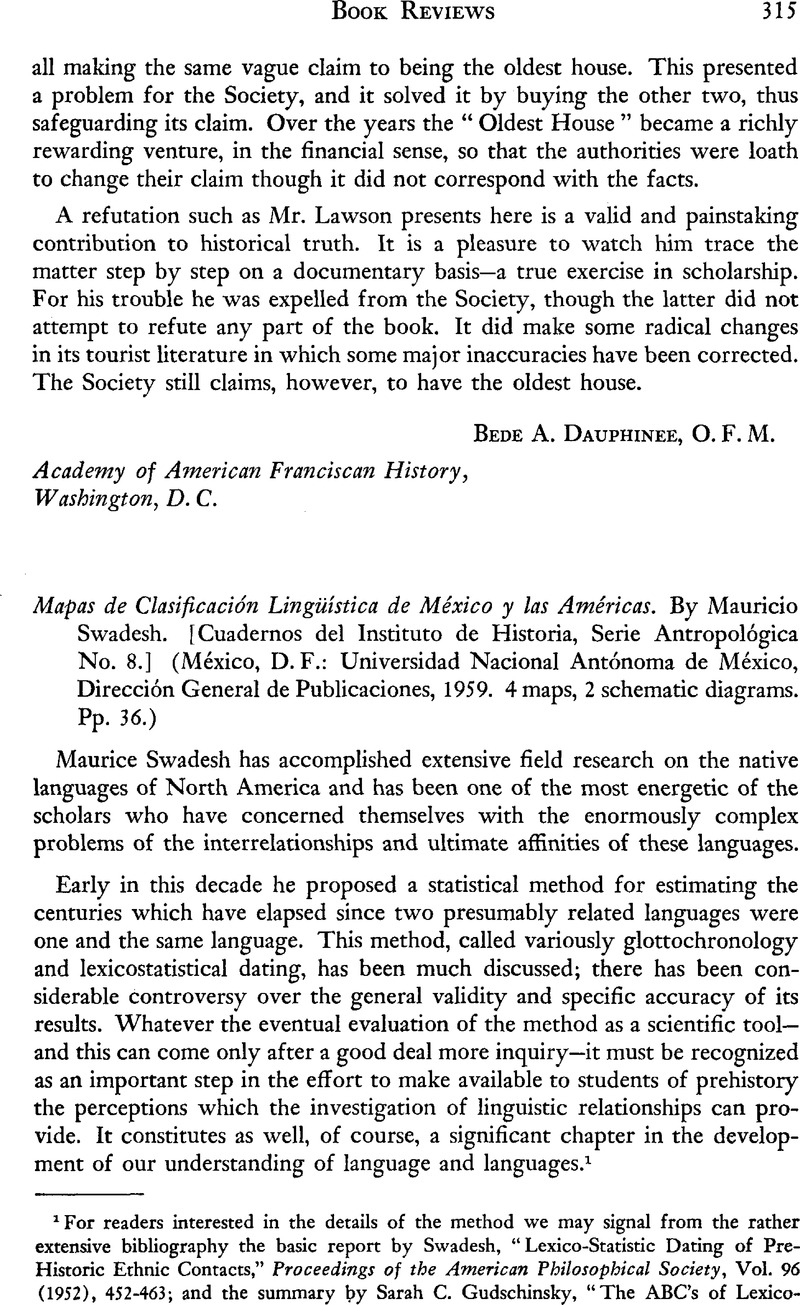Published online by Cambridge University Press: 11 December 2015

1 For readers interested in the details of the method we may signal from the rather extensive bibliography the basic report by Swadesh, , “Lexico-Statistic Dating of Pre-Historic Ethnic Contacts,” Proceedings of the American Philosophical Society, Vol. 96 (1952), 452–463 Google Scholar; and the summary by Gudschinsky, Sarah C., “The ABC’s of Lexico statistics (Glottochronology),” Word, 12 (1956), 175–210.CrossRefGoogle Scholar Among the numerous evaluative discussions we may cite the following, all from the International Journal of American Linguistics: Kroeber, A.L., “Linguistic Time Depth Results So Far and their Meaning,” 21 (1955), 91–104 Google Scholar; Rea, John A., “Concerning the Validity of Lexico statistics,” 24 (1958), 145–150 Google Scholar; Hymes, D.H., “On the Rate of Morpheme Decay in Arabic,” 25 (1959), 267–269.Google Scholar In the latter article Hymes promises a more extended evaluation in his article “The Strategy of Lexicostatistics,” in Current Anthropology (in press at the time of this writing).